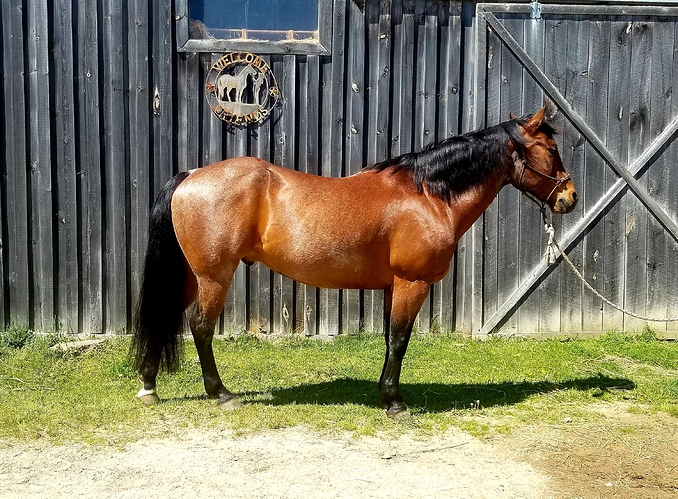Calling @JB and others who have experience tinkering with feed programs for fussy horses.
I’ve got a 17yo QH gelding who is not really a typical QH - more on the “hard keeper” side, condition fluctuates easily, built long and lean and has proven to be quite sensitive in specific ways to changes in management. He’s a stoic sort of guy but as he’s entering his late teens I’m noticing I need to change his management to keep him going solid. He’s also very suspicious of changes in his feed, which makes this a lot harder.
I need to try and do the following:
- Wean him off extruded/processed feeds
- Increase his protein significantly
- Increase his fats moderately
He gets free-choice first cut during the day, lives out 24/7 in a small herd and gets put into a catch pen for a few hours in the morning to enjoy a few flakes of 2nd cut. He used to live on 2nd exclusively and looked much better consistently, so I think that’s been part of the issue but I unfortunately can’t go back to that in his current set-up.
He’s currently getting (per day):
- 2qt Blue Seal Sentinel LS
- 1qt alfalfa pellets
- 1qt beet pulp
- 2oz Camelina oil
- 3,000 IU Vit E, 2mg Se (Elevate Vit E/Se powder, we are Se deficient in our area and he’s tested low for Vit E historically)
I would like to avoid highly processed feed products if at all possible. He’s demonstrated he’s more sensitive to inflammation as he’s gotten older so the more artificial junk I can cut out the better. His last bloodwork panel looked good so other than the Se and Vit E I’m not so worried about micro/macro nutrient deficiencies currently although realize I will need to consider that as I change things.
I’ve been looking at nude oats, soybean meal, copra meal, etc. He turned down the soybean meal hard, so that’s out. I’ve got a barn mate who is going to let me try some of her Coolstance Copra meal and see if he’ll eat that. I appreciate any other thoughts/ideas.
And here he is, last May. He’s a bit leaner than this right now and lost quite a bit of condition over the winter, hence the need to make some changes.


